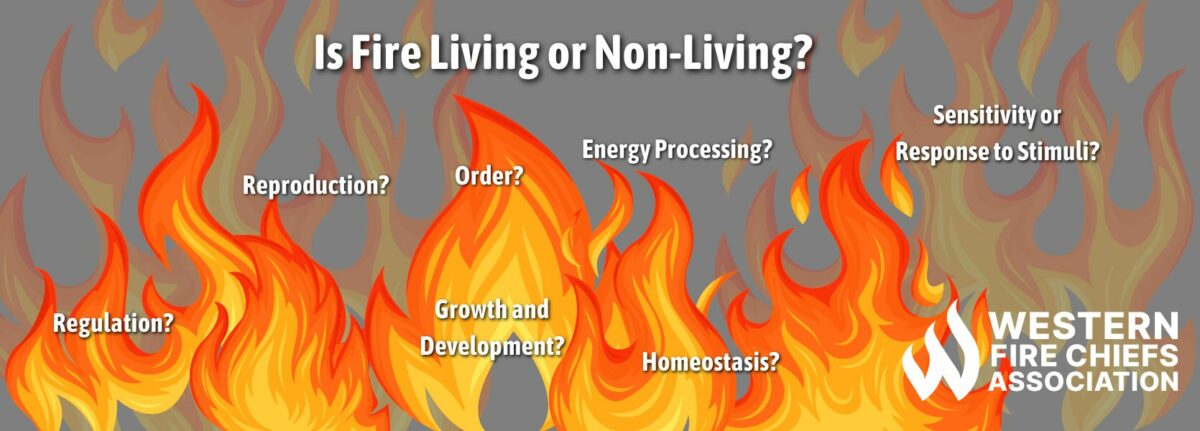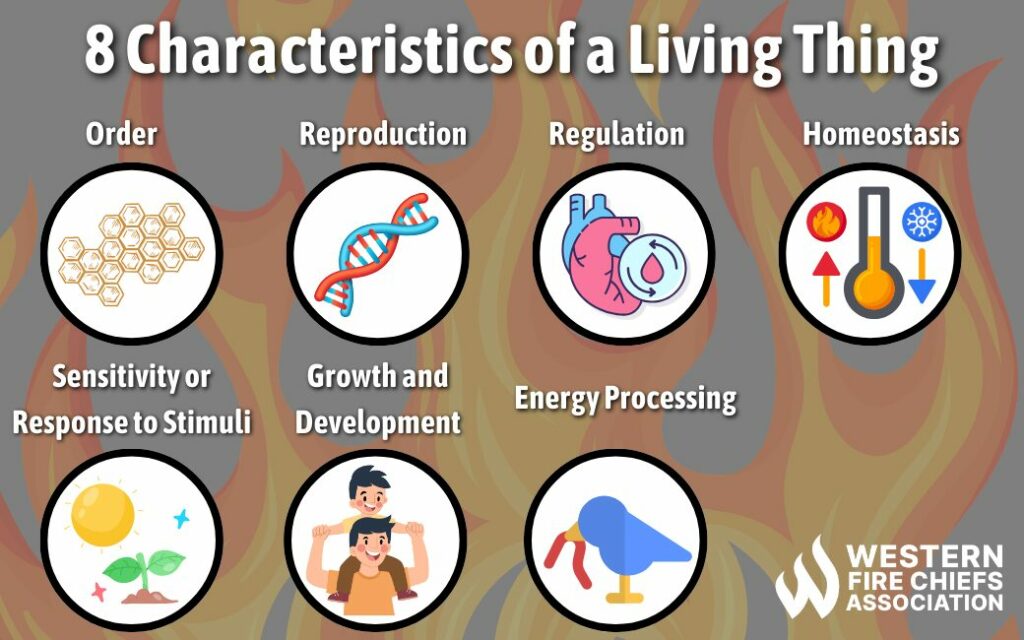Fire Pit Safety Tips
Stay safe around the campfire with tips from the Western Fire Chiefs Association. Learn essential precautions and practices for a worry-free outdoor campfire.
Is fire living or non-living? Explore the depths of this question with expert guidance from the team at the Western Fire Chiefs Association (WFCA).
Published:February 27, 2024
Edited:April 14, 2024

Is fire living or non-living? Explore the depths of this question with expert guidance from the team at the Western Fire Chiefs Association (WFCA).
In discussions about fires, fire officials often refer to the “behavior” of the fire, giving it a life-like element to this natural disaster. A fire necessitates oxygen and fuel to sustain itself, similar to the basic requirements of living organisms. Despite these similarities, a fire is not classified as living.
Fire is considered non-living because it lacks the key characteristics of life defined by biologists. For something to be considered living, it must exhibit all eight characteristics of a living thing:
What is it?
This refers to the building block of life, otherwise known as cells. Living things are organized structures composed of one or more cells that work together to form tissues and vital organs essential for survival.
Does fire have this characteristic?
No, a fire is made up of a mixture of high-temperature gases with cells or order.4 It is no coincidence that wildfires are often described as “unpredictable”.
What is it?
Living things react to different signals they receive, such as plants leaning toward light sources, growing along fences, or reacting when touched. Even small bacteria can move towards or away from chemicals (chemotaxis) or light (phototaxis).
Does fire have this characteristic?
Debated, but by a biological definition, no.If a fire were able to respond to stimuli then it should be able to avoid firefighting foam seeing as how it poses a threat to the sustainability of the flame.5 This is often mistaken as a characteristic of fires because of the sparks that come up when the fire is stoked.
What is it?
Single-celled organisms reproduce by copying their DNA and then splitting the cell into two new ones. Multicellular organisms usually produce special reproductive cells that create new members of the species. Throughout the reproduction process, genes with DNA are passed to the offspring, ensuring the continuity of the species with shared similar traits such as size and shape.
Does fire have this characteristic?
Debated, but by a biological definition, no.Spot fires are not considered a reproduction of a fire because fires cannot copy their DNA, this means the fires will not share the same traits.3 For example, an oil fire is not the same as a house fire even if they are both lit by the same source of fire.2
What is it?
Organisms grow and develop based on their genetic code. Genes contain directions that control how cells grow and develop, making sure that offspring will have similar traits to their parents when they grow up.
Does fire have this characteristic?
Debated, but by a biological definition, no. Although fires do grow, it is a result of how much oxygen and fuel is around them rather than a result of their gene coding.
What is it?
This refers to the mechanisms enabling living things to regulate their responses to environmental and other pressures. For instance, the human body’s circulatory system delivers oxygen where needed and removes waste materials from the body.
Does fire have this characteristic?
Debated, but by a biological definition, no. Although fires do not have systems that require regulation, this is thought to be a characteristic due to the chemical bonds acting as regulation on what is burned for fuel and how it burns.2
What is it?
This is the ability of an organism to maintain steady internal conditions, such as the human body maintaining a constant internal temperature.
Does fire have this characteristic?
No. Similar to the previous characteristic, fires do not have internal conditions to be maintained. The temperature of the fire will depend on the environment’s condition.3
What is it?
All living things need a source of energy to function. Some get energy from the sun through photosynthesis, while others get it from the food they eat through cellular respiration.1 This is the characteristic that fire has most in common with living things.
Does fire have this characteristic?
Yes, like living things, a fire can consume fuel to sustain itself self. A fire’s source of energy comes from any fuel within its reach, allowing the fire to grow and spread.

Whether or not fire is living is a common question because a fire seemingly possesses almost all eight characteristics of a living thing. As described above, an argument can be made on behalf of fires for almost all these characteristics, although the biological definition debunks most of these arguments.
Having discussed whether fire can be classified as alive, it’s worth exploring some intriguing facts about this fascinating phenomenon:
Sometimes, firefighters will very carefully light fires on purpose, referred to as a prescribed fire, to clear overgrown plants and help nature thrive.7 However, these burns are handled by professionals in controlled conditions. Wildfire, on the other hand, is unplanned and extremely dangerous. Even if fires start small, it is difficult to predict if they will become large, destructive wildfires that threaten human lives and communities.
Stay safe around the campfire with tips from the Western Fire Chiefs Association. Learn essential precautions and practices for a worry-free outdoor campfire.
Discover essential firework safety tips to ensure a dazzling display without accidents. Learn how to celebrate responsibly with expert guidance from WFCA.
Explore the role of AI in wildfire prediction with guidance from the WFCA. Learn how advanced algorithms and data analytics enhance early detection and response.